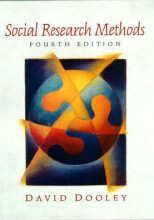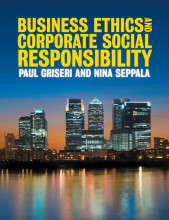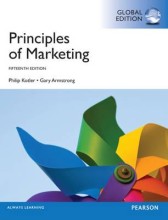Summary: Organization Theory And Design | 9781844809905 | Richard L Daft, et al
- This + 400k other summaries
- A unique study and practice tool
- Never study anything twice again
- Get the grades you hope for
- 100% sure, 100% understanding
Read the summary and the most important questions on Organization theory and design | 9781844809905 | Richard L. Daft ; Jonathan Murphy ; Hugh Willmott.
-
1 Organizations and Organization Theory
This is a preview. There are 13 more flashcards available for chapter 1
Show more cards here -
There are two ways to look at and think about organizations and how they function. Name them:
The open system approach and the organizational configuration framework.
-
What is a system?
A set of interacting elements that acquires inputs from the environment, transforms them, and discharges outputs to the external environment.
-
Henry Mintzberg, suggest that every organization has a framework of 5 key-subsystems. Name them:
-Technical core
-Technical support
-Middle management
-Administrative support
-Top management
-
Name the 6 parts of structural dimensions:
1. Formalization (aantal documenten aanwezig, job descriptions, policy manuals, etc.)
2. Specialization (the degree to which organizational tasks are subdivided into separate jobs)
3. Hierarchy authority (describes who reports to whom and the span of control for each manager)
4. Centralization (refers to the hierarchical level that has authority to make a decision)
5. Professionalism (the level of formal education and training of employees)
6. Personnel ratios (refer to the deployment of people to various functions and departments)
-
Name the 5 parts of contextual dimensions:
1. Size (counted in amount of employees)
2. Organizational technology (refers to the tools, techniques and actions used to transform input to output)
3. Environment (all elements outside the boundary of an organization, key elements include: industry, government, customers)
4. Goals and strategy (defined as the purpose and competitive techniques that set it apart from other companies)
5. Culture (underlying set of key values, beliefs, understandings, and norms shared by employees)
-
What is a stakeholder?
Any group, within or outside of the company that has a stake in the organization's performance.
-
Many managers are redesigning their companies into learning organization. What is meant by this?
Promoting in communication and collaboration so that everyone is engaged in identifying and solving problems, enabling the organization to continuously experiment, improve, and increase its capability.
-
1.1.1 Current Challenges
This is a preview. There are 8 more flashcards available for chapter 1.1.1
Show more cards here -
What are the current challenges we have to deal with?
- Globalization- Ethics and Social Responsibility- Speed of Responsiveness- Digital Workplace- Diversity -
1.1.2 What is an organization
This is a preview. There are 7 more flashcards available for chapter 1.1.2
Show more cards here -
What is the importance of organizations?
1. Bring together resources to achieve desired goals and outcomes2. Produce goods and services efficiently3. Facilitate innovation4. Use modern manufacturing, service, and information technologies5. Adapt to and influence a changing environment6. Create value for owners, customer and employees7. Accommodate ongoing challenges of diversity, ethics and the motivation and coordination of employees -
1.1.3 Perspective on Organizations
This is a preview. There are 3 more flashcards available for chapter 1.1.3
Show more cards here -
What is a closed system?
Focuses exclusively upon the organization without consideration of its dependence upon or capacity to influence elements comprising its context.Organizations with closed system are autonomous, effectively seals off from the outside world.
- Higher grades + faster learning
- Never study anything twice
- 100% sure, 100% understanding
Topics related to Summary: Organization Theory And Design
-
Fundamentals of Organization Structure
-
Designing organizations for the international environment
-
Manufacturing and service technologies
-
Information technology and control - information technology evolution
-
Information technology and control - information for decision making and control
-
Information technology and control - adding strategic value: strengthening internal coordination
-
Organization size, life cycle, and decline
-
Organizational culture and ethic values
-
Innovation and change - innovate or perish: the strategic role of change - strategic types of change

































